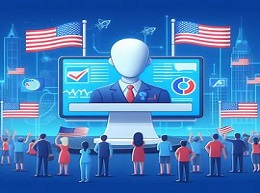AI in Political Campaigns: Analyzing Data and Targeting Voters

In the ever-evolving landscape of political campaigns, the role of artificial intelligence (AI) has become increasingly prominent. From analyzing vast amounts of data to micro-targeting voters, AI is revolutionizing the way politicians strategize and engage with constituents. In this article, we delve into the intricacies of AI in political campaigns, exploring its impact on voter targeting and electoral outcomes.
Data Analytics in Political Campaigns
Data analytics play a crucial role in modern political campaigns, enabling candidates to gain insights into voter preferences, behaviors, and demographics. AI algorithms analyze data from various sources, including social media, voter registration databases, and polling surveys, to identify patterns and trends. By leveraging predictive analytics, campaign strategists can anticipate voter behavior and tailor their messaging accordingly.
Example: During the 2016 U.S. presidential election, the Trump campaign utilized AI-powered data analytics to identify potential swing voters in key battleground states. By analyzing social media activity, consumer behavior, and demographic data, the campaign targeted specific voter segments with tailored messages, contributing to its electoral success.
Micro-Targeting and Personalized Messaging
AI enables political campaigns to micro-target specific voter segments with personalized messages tailored to their interests and concerns. By analyzing individual preferences and online behavior, AI algorithms can identify potential supporters and deliver targeted advertisements through digital channels. This approach allows campaigns to maximize their reach and effectiveness while minimizing wasted resources on broad-based messaging.
Example: In the 2020 U.S. presidential election, the Biden campaign employed AI-driven micro-targeting techniques to engage with young voters on social media platforms like Instagram and TikTok. By crafting personalized content that resonated with this demographic, the campaign successfully mobilized support and increased voter turnout among younger demographics.
Predictive Modeling and Electoral Forecasting
AI-powered predictive modeling techniques enable political campaigns to forecast electoral outcomes with greater accuracy. By analyzing historical election data, demographic trends, and polling information, AI algorithms can predict the likelihood of success in specific regions or demographic groups. This allows campaigns to allocate resources strategically and focus their efforts on areas where they have the highest probability of winning.
Example: In the 2019 UK general election, the Conservative Party utilized AI-driven predictive modeling to target swing constituencies and allocate resources effectively. By identifying key battlegrounds and tailoring their campaign messaging to local issues, the party secured a decisive victory, exceeding expectations in several key electoral contests.
Ethical Considerations and Privacy Concerns
While AI offers numerous benefits to political campaigns, its use raises ethical considerations and privacy concerns. The collection and analysis of vast amounts of personal data raise questions about consent, transparency, and the potential for manipulation. Additionally, the use of AI-driven algorithms for voter suppression or disinformation campaigns poses serious threats to democratic processes and electoral integrity.
AI has emerged as a powerful tool in political campaigns, transforming the way politicians engage with voters and strategize for electoral success. From data analytics and micro-targeting to predictive modeling and electoral forecasting, AI enables campaigns to operate with unprecedented precision and efficiency. However, its use also raises ethical and privacy concerns that must be addressed to ensure fair and transparent electoral processes. As technology continues to evolve, the role of AI in political campaigns will undoubtedly shape the future of democracy and political engagement.